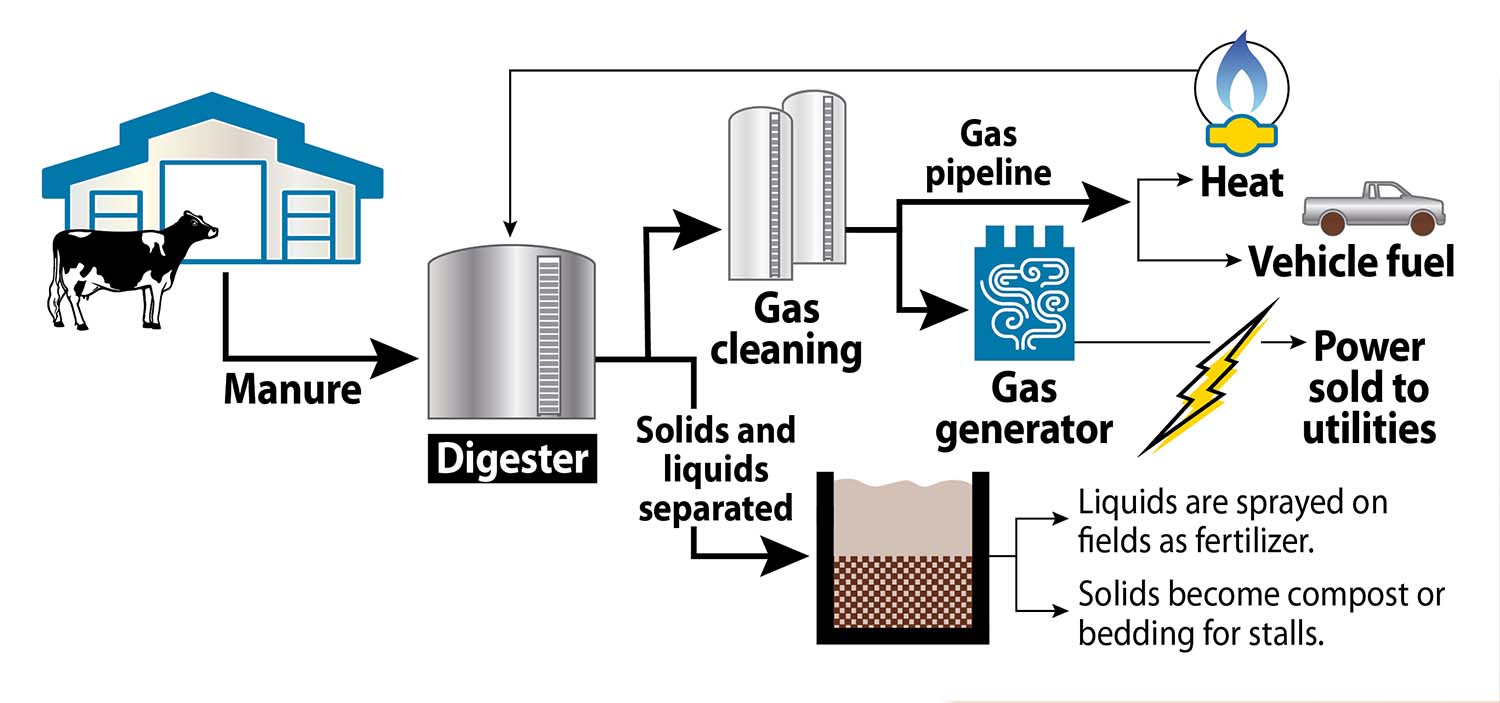
Graphic by Lynette Alcorn
Manure is routed to the tanks, where it’s heated and the gas is collected. The system draws off liquid fertilizer for crops. The remaining solids reduce to bacteria-free, odorless compost and bedding for the cows.
Anaerobic methane digesters simulate a cow’s digestive system. Organic matter goes into a sealed container — such as a covered lagoon or a large tank — that’s void of oxygen and heated to at least 100 degrees. As bacteria feed on the matter, they release methane, which is captured inside the digester and converted into heat, electricity or renewable natural gas.
Digesters differ in design. Covered lagoons capture methane under an impermeable cover and rely on daytime temperatures for heating. Thus, biogas production may wane in winter months. Complete mix, plug flow and other kinds of mechanical digesters cost more but can be more efficient.
Ownership models vary, too. For example, producers may accept the risk, own and run their digester, and reap all the profits. Or they may own the digester and hire another party to manage the system. Producers also may enter an agreement to provide manure to another party that owns and operates the digester.
— Sheryl Smith-Rodgers
 Back to main article
Back to main article